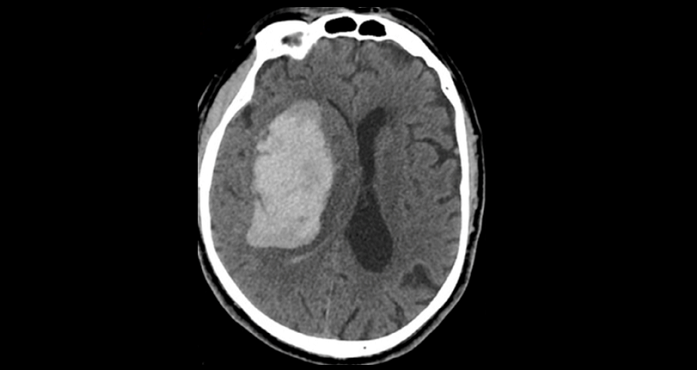Infections were actually more common among patients receiving the drug than for nicardipine-treated patients, with no difference in disability and mortality rates.

Despite its sympatholytic effects, use of labetalol to reduce blood pressure in patients with intracerebral hemorrhage is not associated with a lower infection risk than use of nicardipine, according to a retrospective analysis. In fact, patients treated with labetalol actually had higher infection rates. The findings were published in the October 2017 issue of Stroke.
“Labetalol is a commonly used drug to treat hypertension in stroke, be it ischemic or hemorrhagic,” lead author Kyra J Becker, MD (University of Washington, Seattle), told Neurovascular Exchange in an email. “Based on animal studies and some clinical observations, we thought that patients who were treated with labetalol instead of nicardipine for hypertension would benefit from its sympatholytic effects.” Specifically, they investigated whether labetalol use would be associated with reduced infection risk.
Becker and colleagues conducted a retrospective review of a prospectively maintained single center database to identify 1,066 admissions for intracerebral hemorrhage that occurred between July 2010 and June 2015. Of these patients, 525 were treated with labetalol (43.6%), nicardipine (20.4%), or both (36.0%).
Overall the in-hospital mortality rate was 40.2%, and the infection rate was 15.8%. A total of 77.2% of patients achieved an mRS > 2 at discharge. After adjustment, use of labetalol alone was associated with higher infection than use of nicardipine alone, but not when compared with use of both agents together.
Risk of Infection With Labetalol Alone
|
|
Adjusted OR (95% CI) |
P Value |
|
Versus Nicardipine |
3.12 (1.27-7.64) |
0.013 |
|
Versus Labetalol + Nicardipine |
2.44 (0.98-6.07) |
0.055 |
Alone or in combination with nicardipine, labetalol use was not associated with better survival or achievement of an mRS > 2.
“If labetalol really does increase the risk of infection, we don’t know why,” said Becker. “Our study is a retrospective observations study and therefor subject to biases. Even though propensity matching was done, we can’t be certain that all of the patient characteristics were similar, so it is possible that patients treated with labetalol were more prone to infection in some way that we could not control for.”
She also speculated that the infection-reducing effects of labetalol are not as great as anticipated because inhibition of the sympathetic activation that leads to immune dysfunction is probably more a beta-blocking effect, and labetalol has more alpha- than beta-blocking function.
Craig Anderson, MD, PhD (George Institute for Global Health, Sydney, Australia), told NVX in an email that “one could come up with plausible hypotheses [why infection rate was higher with labetalol], but the key message here is that there is no clear differences in mortality or disability outcomes between the two antihypertensive agents.”
In essence, he said, “this is an interesting study that set out to test a specific and plausible hypothesis in a reasonably large sample size but was unable to prove the hypothesis, in part related to the limitations associated with the study design: retrospective, small sample size, variable definitions, and incomplete adjustment for confounders.”
Becker ecommended that further study evaluating beta blockade in stroke are warranted. “It is important to know if our standard blood pressure lowering strategies may have off-target actions that affect outcome,” she commented.
Source:
Starr JB, Tirschwell DL, Becker KJ, et al. Labetalol use is associated with increased in-hospital infection compared with nicardipine use in intracerebral hemorrhage. Stroke. 2017;48:2693-2698.
Disclosures:
- Becker reports no relevant conflicts of interest.
- Anderson reports receiving honoraria and travel reimbursement from Takeda

